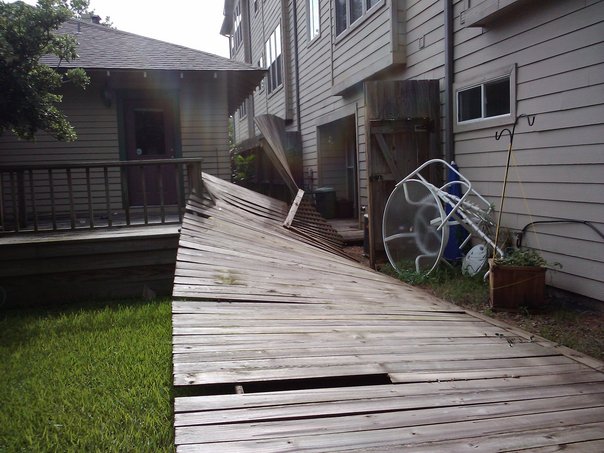Should You Repair or Replace Your Fence? 5 Top Considerations
We’ve all faced that moment when our fence starts showing its age – missing boards, wobbly posts, or patches of rot that seem to multiply overnight. It’s tempting to grab some nails and attempt a quick fix, but that’s not always the wisest choice. The decision between whether you repair or replace your fence isn’t just about immediate costs; it involves considering long-term value, safety concerns, and property aesthetics. Let’s explore what factors you should weigh before deciding whether to patch up your existing fence or start fresh with a new installation.

Key Points
- Replace if repair costs exceed 30-40% of replacement value, as investing in repairs becomes less economical long-term.
- You should replace your fence when deterioration affects more than 20% of the fence structure for optimal safety and aesthetics.
- Assess age and expected lifespan – older fences near end of life warrant replacement over repeated repairs.
- Evaluate property value impact – new fences add 5-10% value versus 1-3% for repairs.
- Compare maintenance costs – repairs often lead to rising annual costs while replacement reduces ongoing maintenance expenses.
Age and Condition Assessment
A thorough inspection marks the pivotal first step in determining whether to repair or replace your fence. We’ll need to assess both the age of the structure and evaluate several key condition indicators that signal its overall health.
Let’s start by examining the fence posts, as they’re the foundation of the entire structure. We’ll check for rot, especially at ground level, and any noticeable lean or movement.
Next, we’ll inspect the rails and pickets for warping, splitting, or detachment. For metal fences, we’ll look for rust spots, bent sections, and compromised welds.
Age plays a fundamental role in our decision-making process. Wood fences typically last 15-20 years with proper maintenance, while aluminum can survive 20-30 years, and wrought iron up to 50 years. We’ll consider whether we’re approaching these milestones.
If we’re finding that more than 20% of the fence components show significant deterioration, replacement often proves more cost-effective than repairs. We’ll also factor in whether the damage is isolated to specific sections or represents widespread structural compromise, helping us make an informed decision about the fence’s future.
When considering replacement materials, #1-2 Grade Boards offer an attractive appearance with tight and sound knots, providing a balance of quality and cost-effectiveness.
Costs If You Repair or Replace Your Fence
The financial comparison between repairs and full replacement requires careful calculation of both immediate and long-term costs. We’ll need to evaluate that repairs typically range from $300-$800 for minor fixes, while more extensive repairs can cost between $800-$4,000 depending on the damaged sections and materials involved.
To replace your fence, we’re looking at $4,000-$5,000 for a basic wood fence and up to $12,000 or more for premium materials like wrought iron or composite. However, we must factor in that repeated repairs often end up costing more over time than a single replacement. When repair costs exceed 30-40% of replacement value, we generally recommend opting for a new fence. It’s important to consider the longevity and maintenance costs of different fence materials, as some options may require more frequent upkeep.
Let’s also examine the maintenance trajectory. A repaired fence may need additional work within 1-2 years, while a new installation typically comes with a warranty and can last 15-20 years with proper care. We’ll want to analyze labor costs too – repair work often commands a premium hourly rate compared to the efficiency of full replacement projects, where crews can work systematically across the entire installation.
Common Signs of Fence Damage
Regularly monitoring your fence for early warning signs can help prevent costly structural failures down the line. We recommend checking for these telltale indicators every few months, particularly after severe weather events.
Let’s examine the most critical signs of fence deterioration. Wood fences often show rot at ground level first, accompanied by soft, crumbling sections and visible fungal growth. We’ll also spot warped or splitting boards, loose or rusted hardware, and posts that have begun to lean or shift in the soil.
For vinyl fencing, we look for cracking, discoloration, and sections that have come loose from their posts. In metal fences, rust is our primary concern, especially at welded joints and ground contact points. Chain link fences typically show damage through bent or broken links, loose tension wire, and posts that have heaved out of position.
When we inspect masonry fences, we search for cracking in mortar joints, efflorescence (white powder on brick surfaces), and any bulging or leaning sections. Posts that show movement or concrete footings with visible cracks require immediate attention. According to a survey by Home Depot, 40% of repairs are due to rotting posts, making it a significant concern for homeowners.
Long Term Value Considerations
Making smart decisions about whether to repair or replace your fence requires careful analysis of long-term financial implications. We’ll help you evaluate the cost-benefit scenarios that affect your property’s value and your wallet over time.
Let’s examine three key financial scenarios that influence the repair-vs-replace decision:
| Factor | Repair Impact | Replace Impact |
|---|---|---|
| Property Value | 1-3% increase | 5-10% increase |
| Annual Maintenance | $100-300 rising | $50-150 stable |
| Lifespan | 2-5 years added | 15-30 years new |
When we consider long-term value, we’re looking beyond today’s repair costs. A series of ongoing repairs might exceed replacement costs within 3-5 years, especially with older fences requiring frequent maintenance. We’ve found that new fences typically offer better warranties, improved materials, and enhanced security features that add lasting value to your property.
Additionally, we must factor in the appreciation of your property. A new fence can serve as a significant selling point, while a patched-up fence might deter potential buyers or lead to lower offers during property valuation. Furthermore, iron fences offer a range of customizable designs and colors, providing both aesthetic appeal and security, which can enhance the overall value of your property.
Material and Design Options to Replace Your Fence
While choosing between repair and replacement, understanding available material and design options becomes critical for making an informed decision. We’ll want to examine modern fencing materials like vinyl, which offers low maintenance and durability, or composite materials that combine wood fibers with plastic for enhanced longevity. Traditional wood options now include pressure-treated pine, cedar, and redwood, each offering distinct advantages in different climates.
When we’re evaluating designs, we’ll find that today’s manufacturers offer innovative solutions like modular panels, decorative post caps, and varied textures that weren’t available when our original fence was installed. We can choose from privacy designs with overlapping boards, semi-private options with lattice tops, or security-focused designs with aluminum reinforcement. Modern installation methods also provide better structural integrity through improved post-setting techniques and concrete foundations.
Let’s look at how contemporary materials integrate with our property’s aesthetic. Many newer options allow us to maintain a traditional look while incorporating advanced materials, such as PVC fencing with wood grain textures or aluminum posts disguised as classic wrought iron. Additionally, vinyl fences offer impressive durability, resisting moisture, insects, and environmental factors, making them an excellent long-term investment to replace your fence.
Frequently Asked Questions – Repair or Replace Your Fence
Do I Need a Permit to Repair or Replace My Fence?
We’ll need to check with our local building department, as fence permit requirements vary by municipality. Many areas require permits for new fences but allow repairs without permits.
Will My Homeowner’s Insurance Cover Fence Damage?
We recommend checking your policy details, as most standard homeowner’s insurance covers fence damage from specific perils like storms, falling trees, or vandalism, but won’t cover normal wear and tear.
How Long Does a Typical Fence Repair or Replacement Take?
We’ll typically complete basic fence repairs in 1-3 days, while full replacements take 2-5 days. Weather conditions, property size, fence type, and permitting requirements can extend these timeframes.
Can I Replace Just One Section of My Fence?
Yes, we can replace individual fence sections, but we’ll need to guarantee the new panels match existing ones and properly connect to the remaining structure’s posts and hardware.
Should I Notify My Neighbors Before Starting Fence Work?
We strongly recommend notifying neighbors before fence work begins, as it affects shared property lines, may require access to their yard, and demonstrates good neighborly etiquette to avoid potential disputes when you replace your fence.
Takeaway
We’ve examined the key factors in fence repair versus replacement decisions, weighing age, structural integrity, and cost-benefit analyses. When deterioration exceeds 20%, we recommend to replace your fence to maximize property value and security. By considering material durability, maintenance requirements, and long-term investment potential, we can determine the most cost-effective solution. Our assessment framework guarantees ideal decisions based on empirical evaluation and property-specific variables.








